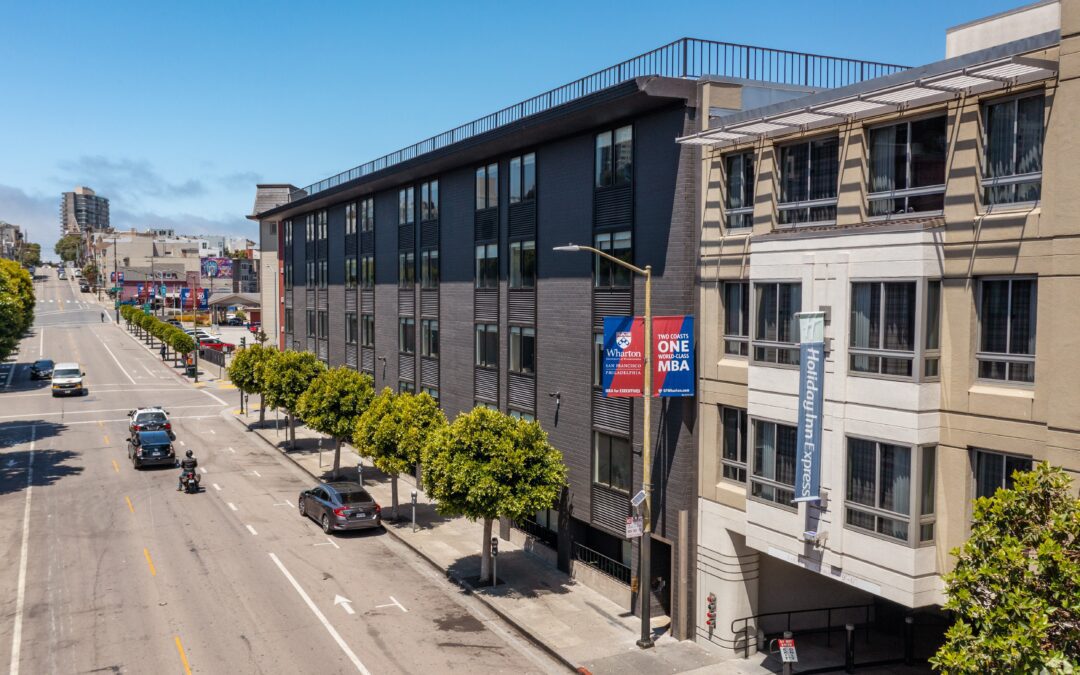Properties of all shapes and sizes are under the Lender’s microscope. Even property “owners” with long-term relationships with multiple assets with the same lender are under the lender’s microscope. Lenders use ratios, and when the ratios don’t match up with a lender’s ratio requirements, the owner/borrower will be asked to provide additional security (cash or alternative properties as collateral).
“I read the news today; oh boy……”
Commercial real estate company, Costar, provides CRE news daily. Today was a mix of grim and great, and the grim illustrates “Ratios Gone Wild.”
The Grim:
We all know the office market in SF is in a tailspin. I believe the market will return, but I liken it to the movie Frankenstein. It’s going to have to die and then be brought back to life, and it won’t be quick.
The Hotel sector in SF is also struggling. According to Costar, An affiliate of DiNapoli Capital Partners is surrendering Kimpton Alton Hotel in Fisherman’s Wharf after failing to pay back an $85 million loan on the property.
Before Covid, occupancy rates stood at 80% and an ADR of $250 a night. Now, SF is at 58% with an ADR of $200 a night.
The Great:
Data Centers for AI. Costar says, “New and emerging artificial intelligence applications have created “unprecedented demand,” for data center capacity, he said. He said demand played a key role in DataBank increasing its credit facility limit with lenders. Analysts have said the increasing technological advances require more digital hubs from various providers and increasing power, stoking competition.”
The Ratios
Among the many factors commercial lenders scrutinize, ratios are essential in assessing a potential borrower’s financial health and viability. These key ratios offer insight into everything from debt service coverage to liquidity and leverage. Understanding what these metrics mean and how they influence lending decisions is essential for anyone seeking commercial financing.
These are some of the common ratios that commercial lenders consider when evaluating a commercial real estate loan:
Net Operating Income (NOI)
The NOI measures an income-producing property’s profitability before adding in any costs from financing or taxes.
- Formula:
- NOI = (Revenue) – (Operating Expenses)
- Impact on Borrower:
- NOI helps determine a property’s value
Loan-to-Value (LTV) ratio
The LTV ratio measures the loan amount against the property’s appraised value. Lenders use LTV to determine risk.
- Formula:
- LTV ratio = (Loan amount) / (Appraised value) ✕ 100
- Impact on Borrower:
- A low LTV can improve the odds of qualifying for a competitive mortgage or favorable refinance terms.
Debt Service Coverage Ratio (DSCR)
The Debt Service Coverage Ratio (DSCR) is a measure of a property’s ability to generate enough income to cover its debt obligations
- Formula:
- DSCR = (NOI) /(Total Debt Servicing)
- Impact on Borrower:
- Though no industry standard exists, many lenders will set minimum DSCR requirements between 1.2 and 1.25.
- A DSCR of 1 indicates a company has enough operating income to pay off its debt service costs.
- A DSCR of less than 1 denotes a negative cash flow, indicating the borrower may be unable to cover current debt obligations without drawing on outside sources or borrowing more.
- A DSCR of at least 2 indicates that a company can cover its debt two times.
Capitalization Rate (Cap Rate):
- The cap rate measures the expected return on an investment property based on its net operating income (NOI) relative to its purchase price.
- Formula:
- Cap Rate = (NOI) / (Property Purchase Price)
- Impact on Borrower:
- A higher cap rate indicates a potentially better investment opportunity.
- It helps investors compare different properties.
Loan Constant (LC):
- The loan constant represents the annual debt service (loan payments) relative to the loan amount.
- Formula:
- LC = (Annual Debt Service) / (Loan Amount)
- Impact on Borrower:
- A lower loan constant means lower annual debt payments relative to the loan amount.
Operating Expense Ratio (OER):
- OER assesses the proportion of operating expenses to the property’s gross income.
- Formula:
- OER = (Operating Expenses) / (Gross Rental Income)
- Impact on Borrower:
- A lower OER indicates efficient management of expenses.
Loan-to-Cost Ratio (LTC):
- Like LTV, the LTC ratio compares the loan amount to the total cost of acquiring the property (including construction costs if applicable).
- Formula:
- LTC = (Loan Amount) / (Total Project Cost)
- Impact on Borrower:
- A lower LTC suggests less risk for the lender.
Break-Even Ratio (BER):
- The BER calculates the minimum occupancy rate required for the property’s income to cover all expenses.
- Formula:
- BER = (Operating Expenses + Debt Service) / (Gross Rental Income)
- Impact on Borrower:
- A higher BER indicates greater reliance on rental income to cover costs.
While each lender may prioritize different ratios based on risk tolerance and lending policies, understanding these ratios can help borrowers present a strong case when seeking commercial real estate financing.

